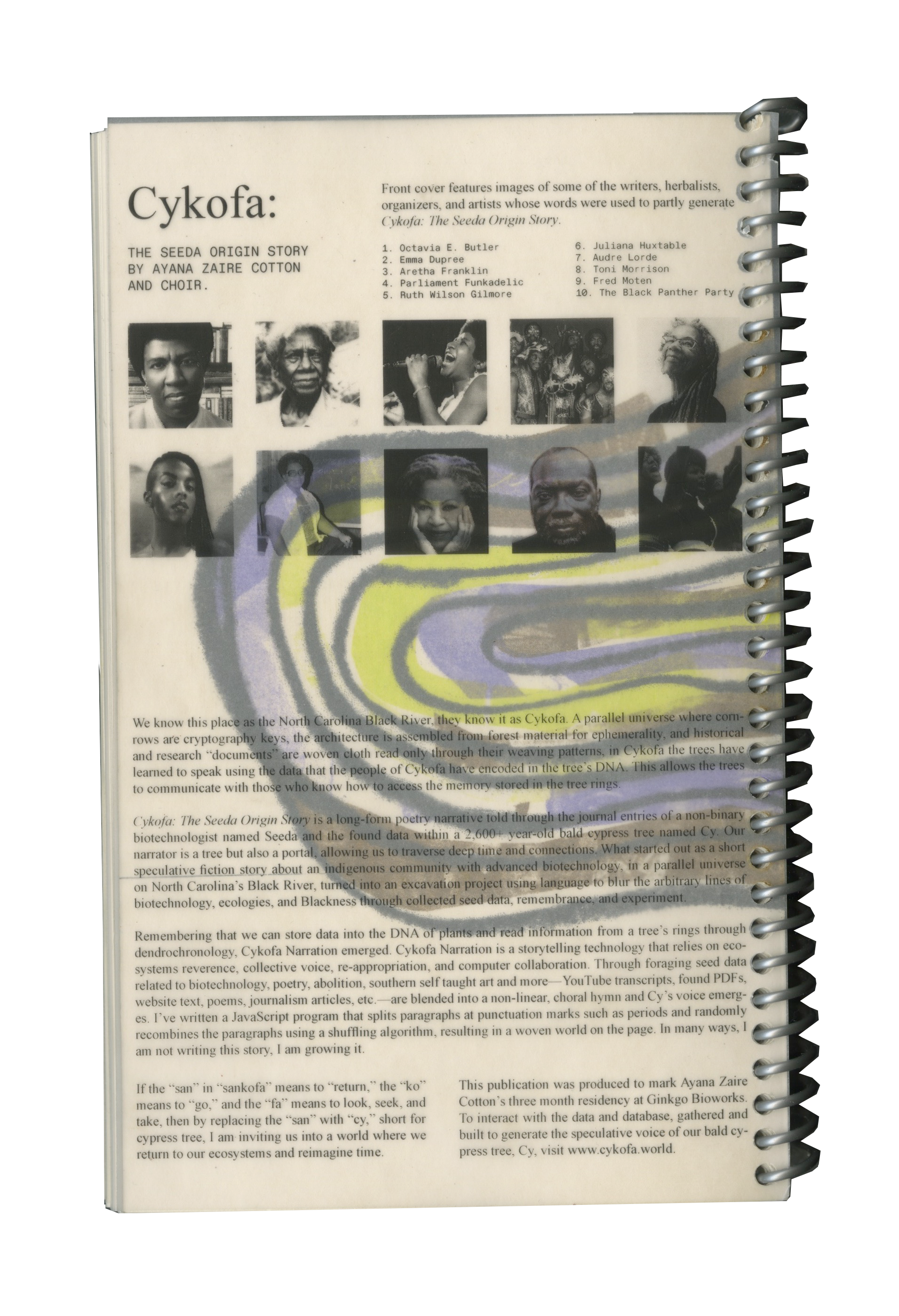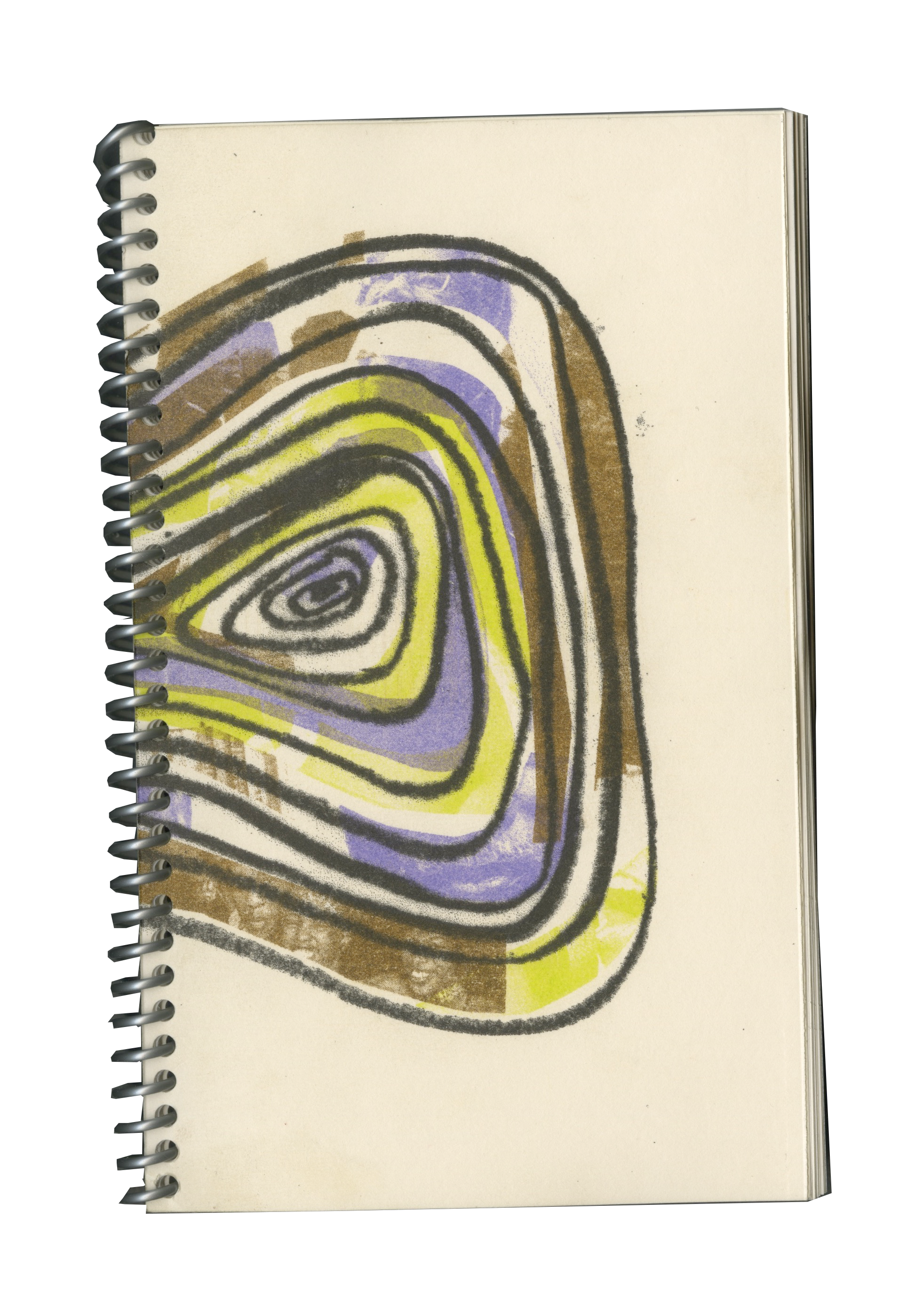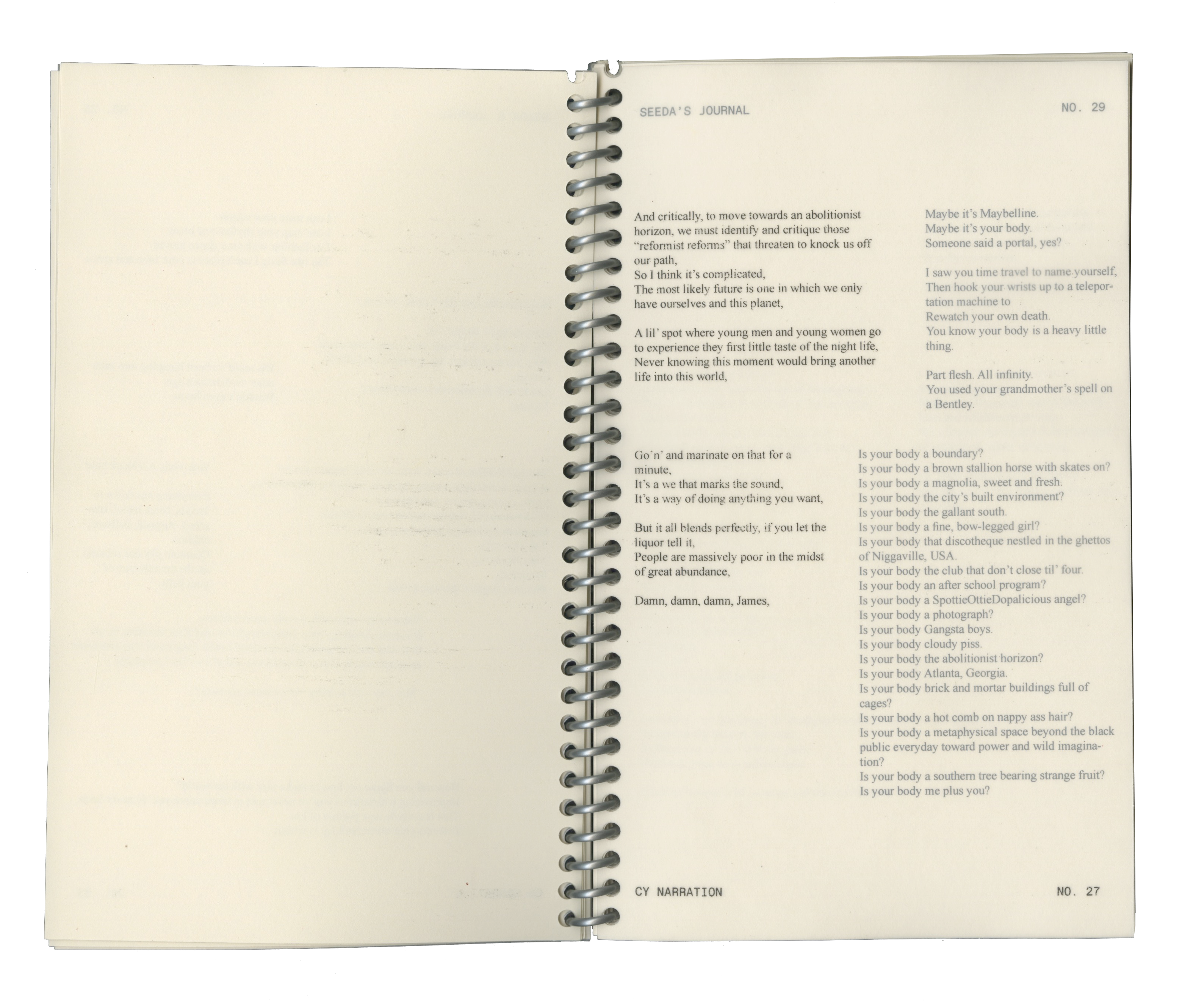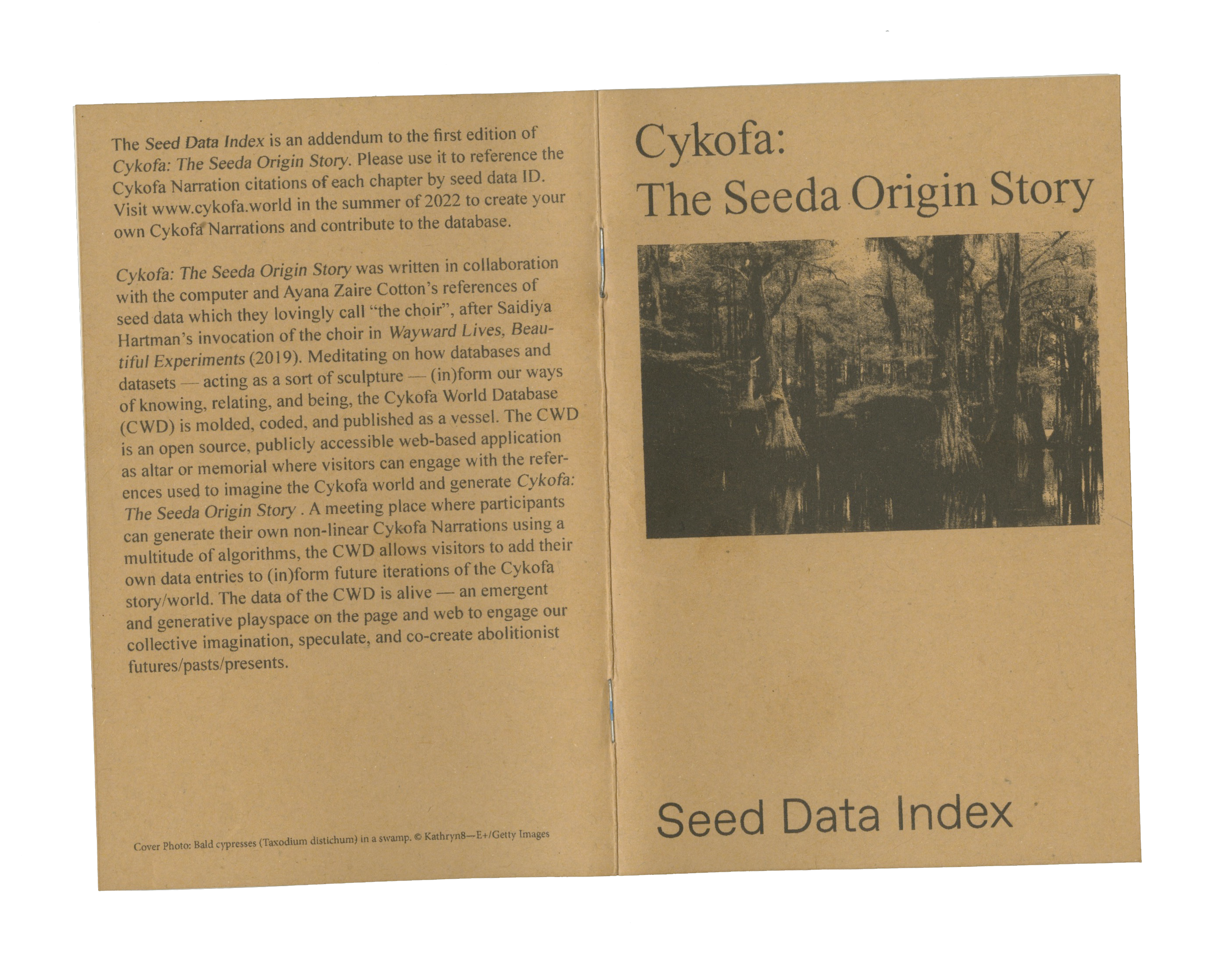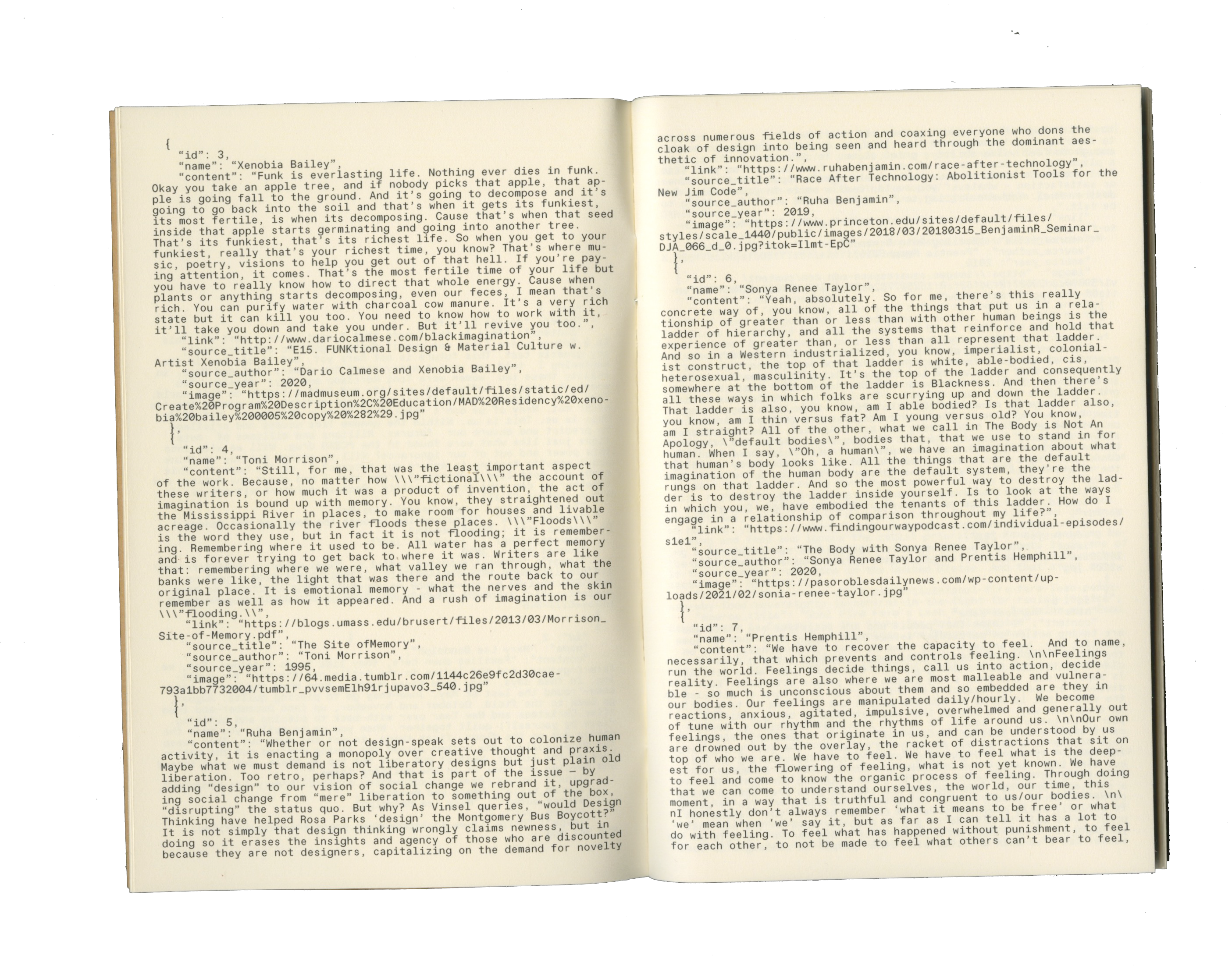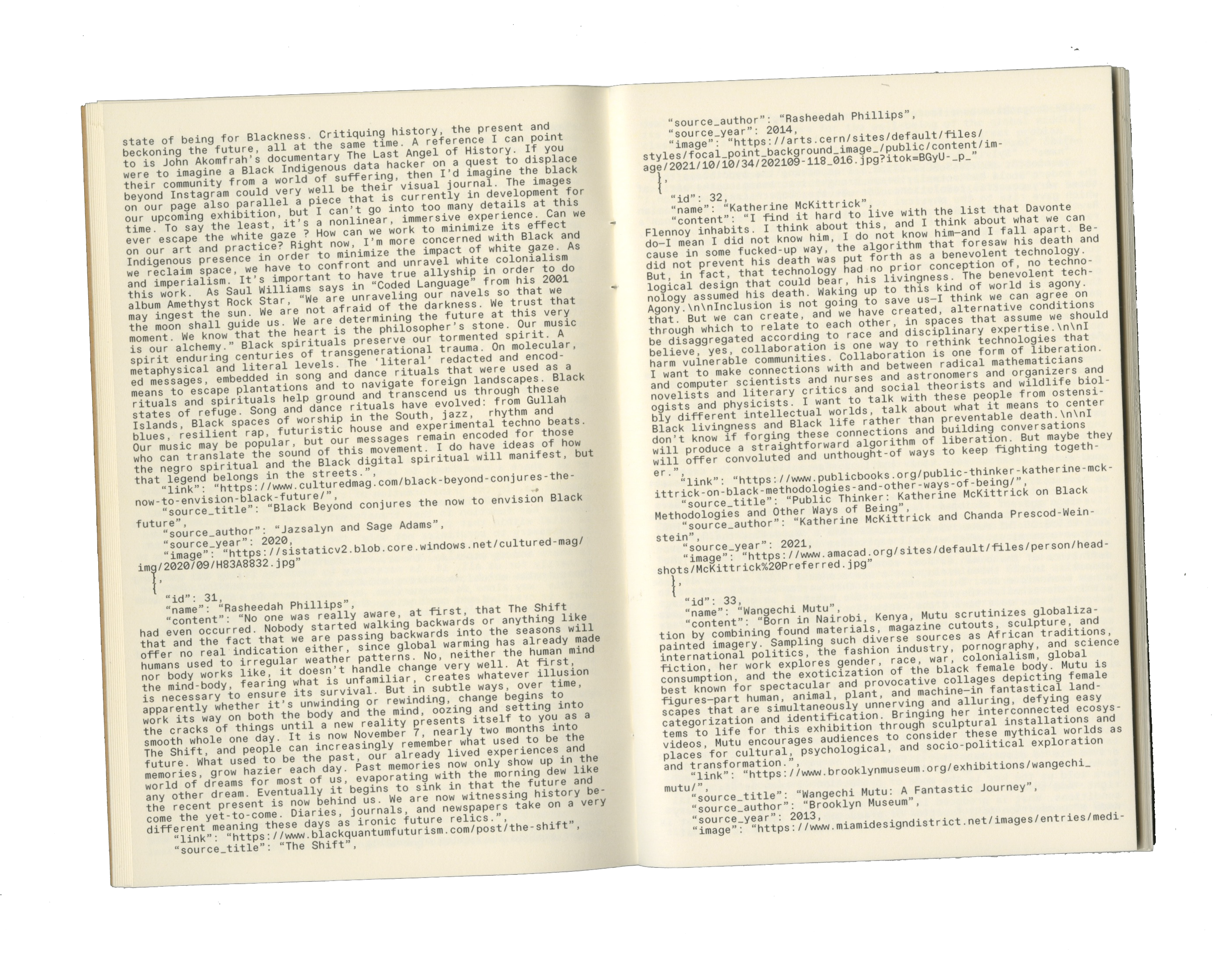
Cykofa: The Seeda Origin Story
2022Purchase ︎︎︎
We know this place as the North Carolina Black River, they know it as Cykofa. A parallel universe suspended among past and future — where cornrows are cryptography keys, data farms are data forests, the weaving loom is a computer, a cloth is a document, and chain link fencing from demolished prisons are used as architectural membrane woven with plant life. In Cykofa the trees have learned to speak using the data Cykofians have encoded in the tree’s DNA and tree ring memory.
Remembering that we can store data into the DNA of plants and read information from a tree's rings through dendrochronology, I developed Cykofa Narration as a methodology. Cykofa Narration is a storytelling technology/methodology that relies on ecosystems reverence, collective voice, re-appropriation, and computer collaboration. Developed and published during the Ginkgo Bioworks Creative Residency, Cykofa: The Seeda Origin Story is a long-form poetry narrative told through the journal entries of a non-binary biotechnologist named Seeda and the found data within an ancient, 2,600+ year-old bald cypress tree named Cy. Our narrator is a tree but also a portal, allowing us to traverse deep time and connections. The people of Cykofa have traditionally hosted their data within the DNA of their trees, but what happens when Seeda discovers a rip in the dendrochronological memory, exposing select datasets from our world?
Through foraging seed data related to biotechnology, poetry, abolition, southern self taught art and more—YouTube transcripts, found PDFs, website text, poems, journalism articles, etc.—are blended into a non-linear, choral hymn and Cy’s voice emerges. I have written a JavaScript program that splits paragraphs at punctuation marks such as periods and randomly recombines the paragraphs using a shuffling algorithm, resulting in Cy’s Narration and a woven world on the page. In many ways, Cykofa: The Seeda Origin Story was not written — it was grown.
I completed the printing, cutting, and binding at Studio Two Three in Richmond, Virginia. The book features a risograph printed cover and vellum sheets as an experiment in translucency and opacity. Printing on vellum allowed me to create three narratives in one book: Seeda’s Journal Entries, Cy’s Narration, and both read together. Printing on translucent paper also creates material echoes to the story itself, reinforcing the parallel universe theme and the layering process of the Cykofa Narration methodology and my risograph printmaking practice.
What started out as a short speculative fiction story about an indigenous community with advanced biotechnology, in a parallel universe on North Carolina’s Black River, turned into an excavation project using language to blur the arbitrary lines of biotechnology, spiritual ecologies, and blackness through collected seed data, remembrance, and experiment.
In accordance with Akan wisdom, if the “san” in “sankofa” means to “return,” the “ko” means to “go,” and the “fa” means to look, seek, and take, then by replacing the “san” with “cy,” short for cypress tree, Ayana is inviting us into a world where we return to our ecosystems and reimagine time.
